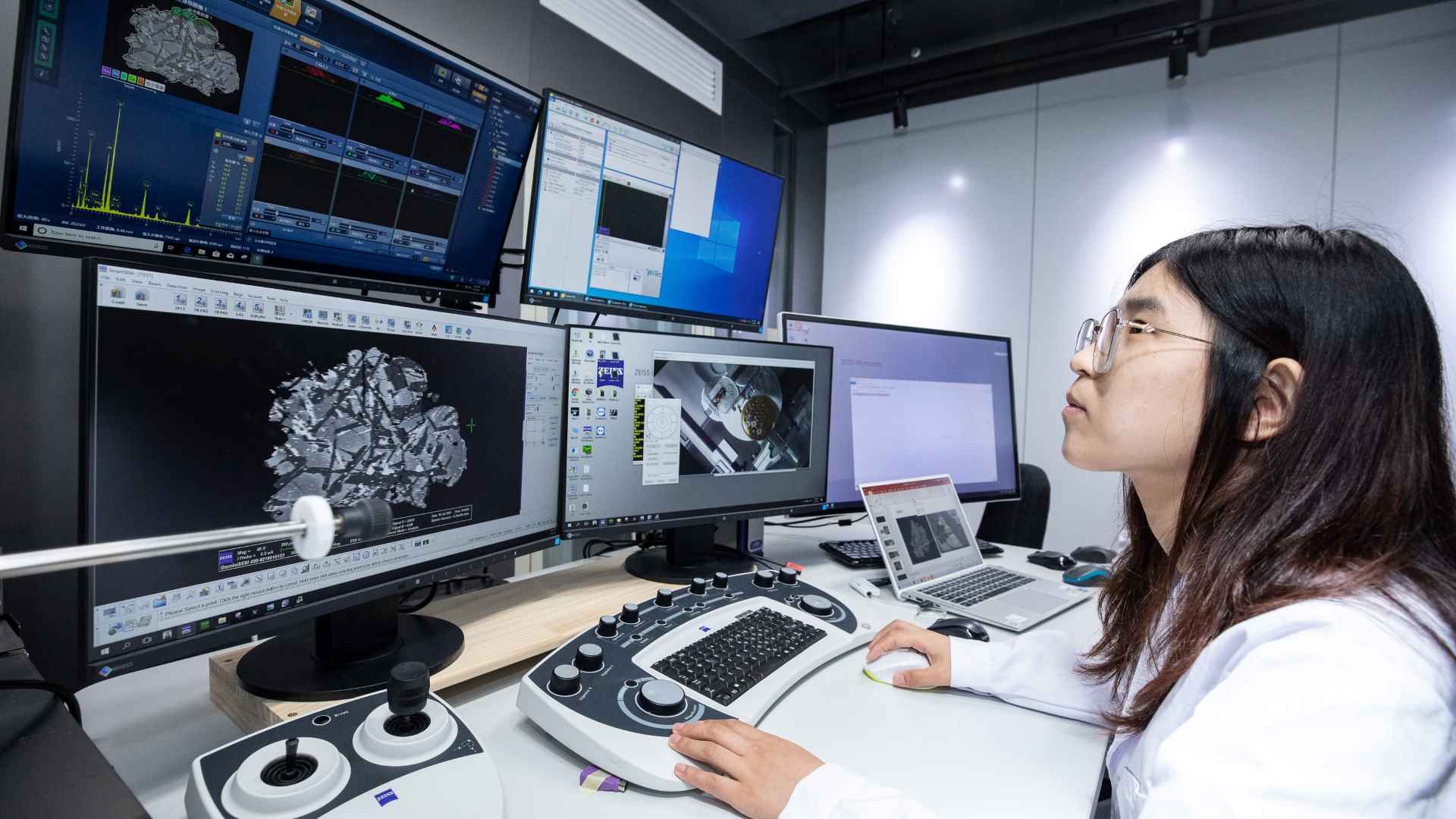
Scientists analyze lunar samples. /CAS
Scientists analyze lunar samples. /CAS
Chinese scientists published three papers in the scientific journal Nature on Tuesday, unveiling the initial research results of the lunar materials brought to Earth by China's Chang'e-5 lunar mission last December, the first time in the past 40 years by human beings.
Three groups of scientists from the Institute of Geology and Geophysics at the Chinese Academy of Sciences (CAS) unveiled new evidence and supported analysis that extend the reported duration of lunar volcanic activity by around 800 to 900 million years.
The three teams focused respectively on the age, the water abundance and the heat-producing elements of the basalt samples collected from the landing site of the Chang'e-5, one of the youngest basalt areas in lunar mare which is formed by volcanic eruptions.

A Chinese scientist at the Chinese Academy of Sciences selects micro-sized particles through a microscope, July 2021. /CAS
A Chinese scientist at the Chinese Academy of Sciences selects micro-sized particles through a microscope, July 2021. /CAS
The first paper by Li Xianhua and his colleagues showed that the new samples are 2.03 billion years old, which extends the reported duration of lunar volcanic activity by around 800 to 900 million years.
"This finding brings forward the time at which the moon's interior was still evolving from around 4 billion years ago to 2 billion years ago," said Li.
He said that the new age for lunar basalts could be used to better calibrate crater-counting chronology models for dating planetary surface ages elsewhere in the solar system.

A Chinese scientist at the Chinese Academy of Sciences analyzes lunar samples through an electron microscope, July 2021. /CAS
A Chinese scientist at the Chinese Academy of Sciences analyzes lunar samples through an electron microscope, July 2021. /CAS
The second study by Hu Sen and his colleagues showed that the parent magma of basalts samples contained less water than samples from regions of older volcanism that erupted 4 to 2.8 billion years ago.
They suggest that the source of the younger basalts became dehydrated during prolonged volcanic activity, consistent with the notion that volcanic activity continued until at least 2 billion years ago.
The third paper by Yang Wei and his team showed that the source of the younger basalts seems to have contained lower abundances of heat-producing elements than expected.
This finding indicates that the moon may have cooled off more slowly than previously thought, which would affect mantle dynamics. It may provide a basis for exploring new models for the thermal evolution of the moon.

